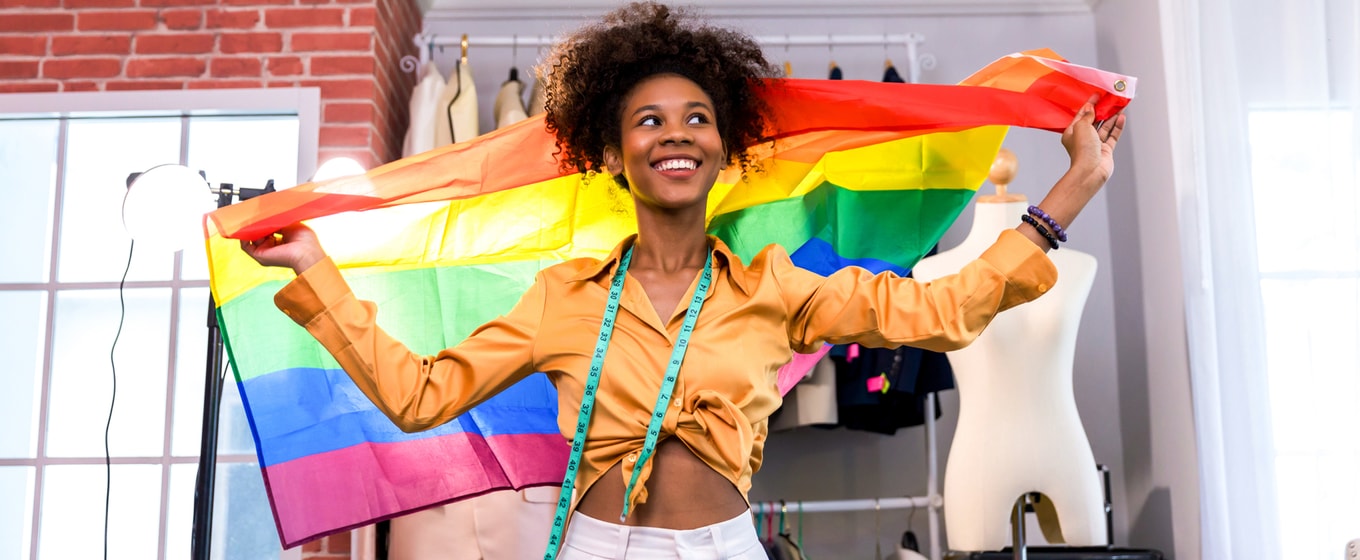In today's world, creating an inclusive work environment is not only of moral importance but also a strategic advantage for businesses.
Embracing diversity and fostering an environment of inclusivity is crucial to attracting and retaining top talent.
An often-quoted Harvard Business Review study found that diverse teams are better at problem-solving. Moreover, employees who feel that they belong have better work satisfaction and are more productive. So it makes sense that diversity and inclusion are big business. Logically, LGBTQIA+ inclusive workplaces are essential for optimum performance.
What is LGBTQIA+?
LGBTQIA+ is an acronym that stands for lesbian, gay, bisexual, transgender, queer and questioning, intersex, and asexual.
The ‘+’ symbol includes all other individuals who have a gender or sexual orientation not covered by the full acronym. For example, the '+' symbol includes people who identify as non-binary.
In the last UK census, 1.5 million people identified as being LGBTQIA+. If you had a company with 100 employees, it's probable that three employees would identify as LGBTQIA+. And since minority groups often socialize together, you may find that you are hiring more people that fit those criteria.
It's possible to have entire teams made up of LGBTQIA+ individuals. This is why policies for diversity in the workplace are so valuable. Having an inclusive culture encourages collaboration between people of all genders, races, and orientations.
Establishing an inclusive culture
Creating an inclusive culture starts at the top.
It often helps if a senior leader is part of the LGBTQIA+ community. However, if you or your leadership team are cis-gendered and straight, you can still help. Being a strong ally and willing to listen to experiences is often enough.
Allyship can and should filter through to all levels. Leaders should show their dedication to equality and create a safe, respectful, and valued environment for all.
You can achieve creating a culture of safety through inclusive policies, and strong penalties for discrimination. Another way to foster a safe inclusive culture is through employee resource groups, which can meet at regular intervals.
Creating an employee resource group
Creating an employee resource group (ERG) for LGBTQIA+ employees can be a powerful way to foster a culture of well-being. It can be a safe space for employees to specifically address LGBTQIA+ concerns.
These groups provide a platform for diversity efforts. LGBTQIA+ employees can network, get support, and advocate for others. ERGs can organize events, training sessions, and awareness campaigns to promote understanding and celebrate diversity.
The group should deliver their feedback directly to HR/Leadership with suggestions for positive change to the business. And more importantly, Leadership should implement those suggestions into policy changes and a wider promotion of cultural shift.
Educate and train employees
Organizations should provide training to employees to foster understanding and empathy towards the LGBTQIA+ community. Education can help dispel stereotypes, address unconscious biases, and create an atmosphere of acceptance. The key thing is to ensure that LGBTQIA+ people feel safe.
Training programs can cover topics such as gender identity, sexual orientation, and the importance of using inclusive language.
You could include a webinar as part of your onboarding training or invite regular guest speakers. However you do it, think about the moments when the message would have the most impact.
Implement LGBTQIA+ inclusive policies
Policies help to lay the foundation for change at work. Work on developing policies that clearly ban discrimination based on sexual orientation, gender identity, and gender expression. The employee handbook should clearly lay out these policies.
Additionally, businesses should review and revise policies related to dress codes, bathroom facilities, and other gender-specific practices. All these small actions go a long way to creating a supportive workplace.
It’s vital that management take an active stance - don't just create policies and then let them get out of date. Revise them regularly to ensure they stay culturally relevant. Every now and again, ask your LGBTQIA+ employees to help you review the policies and include their suggestions. This can make all the difference to your company culture, as well as your employees’ lives and well-being.
Provide supportive benefits
Offering inclusive benefits is an essential step towards creating LGBTQIA+ inclusive workplaces.
Beyond policies promoting equality and respect, organizations can prioritize comprehensive health insurance coverage that includes gender-affirming treatments and procedures.
By ensuring access to necessary medical services, such as hormone therapy or gender confirmation surgeries, employees can feel supported and empowered. Giving employees space to align their physical well-being with their gender identity promotes overall happiness.
Additionally, providing mental health support services can really help. Special mental health services for LGBTQIA+ people can help them feel better and create a caring and understanding environment.
Furthermore, offer flexible leave policies that accommodate transgender employees during their transition process. This allows individuals to navigate this important life event with the necessary support and time.
Providing inclusive benefits show that employers support equality and help LGBTQIA+ employees feel safe, respected, and like they belong.
Use inclusive language and communication
Another way to ensure a culture of safety is to ensure everyone uses and understands inclusive language.
Inclusive language is a way of communicating that respects everyone, regardless of their background, gender, or identity. It involves using words and expressions that include everyone and avoid assumptions or biases.
Promote the use of inclusive language in all internal and external communications. This can be as simple as asking everyone for their preferred pronoun when you meet them at interview.
Encourage employees to share their preferred pronouns with each other as standard practice. Ensure that all communication channels, including email signatures, intranet platforms, and official documents, reflect this commitment to inclusivity.
Celebrate LGBTQIA+ events and observances
Another way to help boost LGBTQIA+ morale is to celebrate important dates, such as Pride Month or Transgender Day of Visibility.
One way to celebrate could be to set up a work social event to go to the nearest Pride event. Or you could hand out Pride flags in the office and have your own Pride Day at work.
You can also show commitment to inclusive events through internal communications and social media campaigns.
By actively supporting and engaging in these events, you can show your understanding and commitment to the LGBTQIA+ community.
Fostering inclusion
Building LGBTQIA+ inclusive workplaces is a journey. Ensuring everyone's safety at work requires ongoing commitment and effort.
Employers and their staff have to follow policies and make sure everyone understands them. It's not enough to create them and put them away on a shelf somewhere as a box-ticking exercise.
There are many ways to foster inclusion, including:
- policies
- mental health support
- education
- awareness campaigns
This helps employees, no matter their sexual orientation or gender identity, to be themselves and feel safe at work.
Author Bio
Joseph Williams is the Co-Founder and CEO of inclusive AI-driven hiring platform Clu. As a campaigner, he has been fighting for more democratic systems for almost two decades. He is passionate about social education, democracy, and the power of digital in elevating both.









These cookies are set by a range of social media services that we have added to the site to enable you to share our content with your friends and networks. They are capable of tracking your browser across other sites and building up a profile of your interests. This may impact the content and messages you see on other websites you visit.
If you do not allow these cookies you may not be able to use or see these sharing tools.